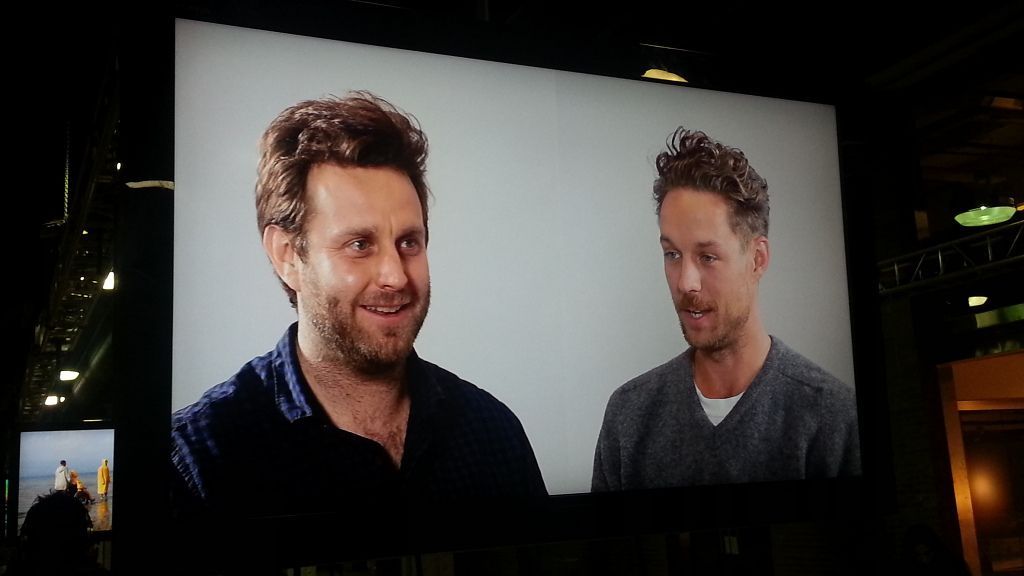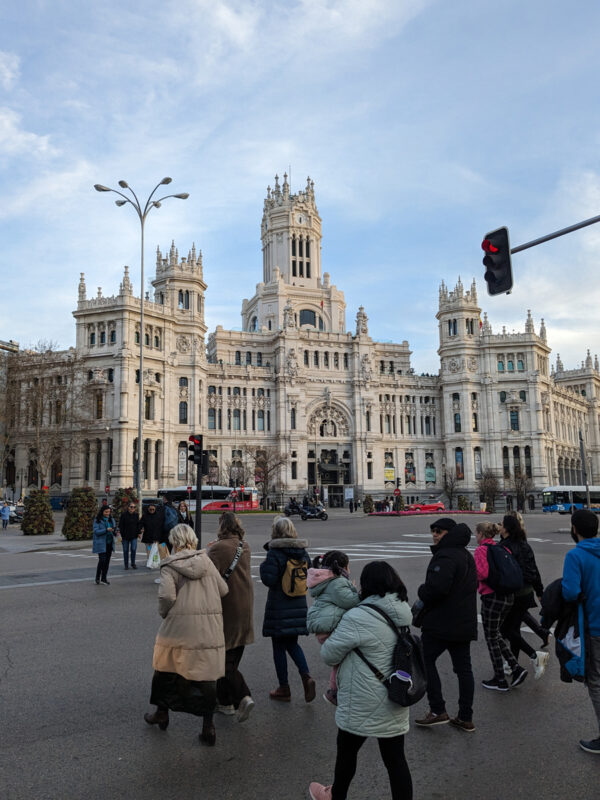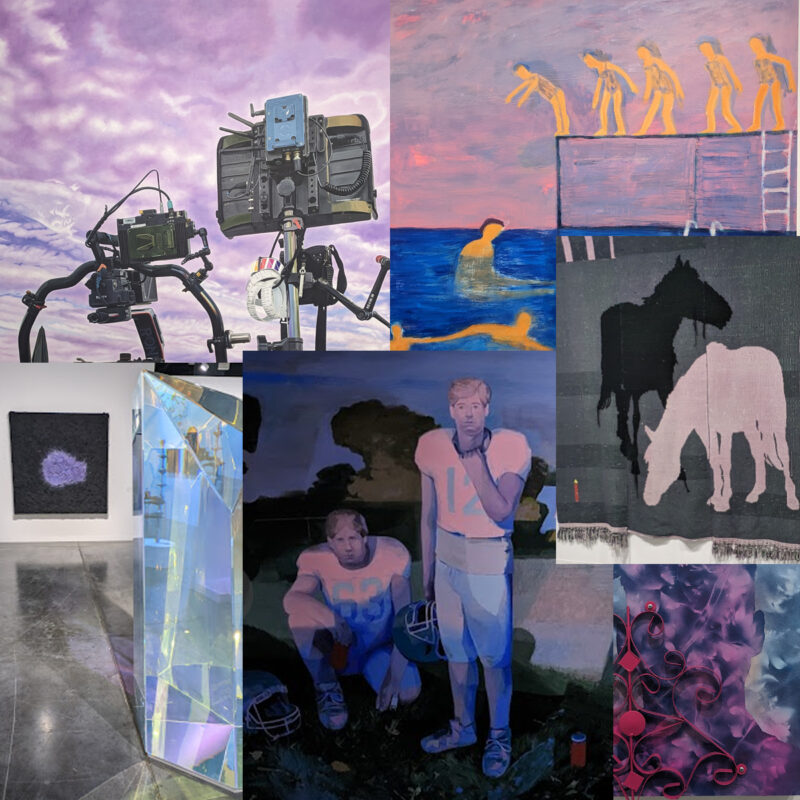The art fair has become the event the art world (at least most of it) loves to hate, yet keeps attending. There are fairs, satellite fairs, alternative fairs. Walking around Armory on Friday I was handed a postcard advertising the UnFair. I didn’t make it to that, sadly, but I did hit up Armory, Volta, Moving Image and Spring Break.
Pier 94 of Armory was my first stop of the weekend. I realize now that this may have been a strategic error. Other fairs (Volta, Moving Image, and Spring Break all included) have made attempts to organize the overwhelming visual stimulation and, yes, blatant commercialism of fairs. Some limit the number of artists a gallery can show, others limit the number of works on display or invite curators to organize the exhibition spaces. Armory, on the other hand, represents the platonic ideal of the Art Fair. It has made no such compromises. Even limiting myself to the contemporary side of the show (there’s also a modern section), the fair was overwhelming.
Struggling to connect with anything I saw on view at Armory gave me a new appreciation for the impact of the viewing context on the ways we interact with art. The environment at Armory is busy and loud. The works aren’t organized with any sort of curatorial premise. The focus is on the element of the art world—sales by established galleries and artists—that I’m the most alienated from, both by choice and by my bank account. Ultimately, I’m not the audience Armory is looking for.
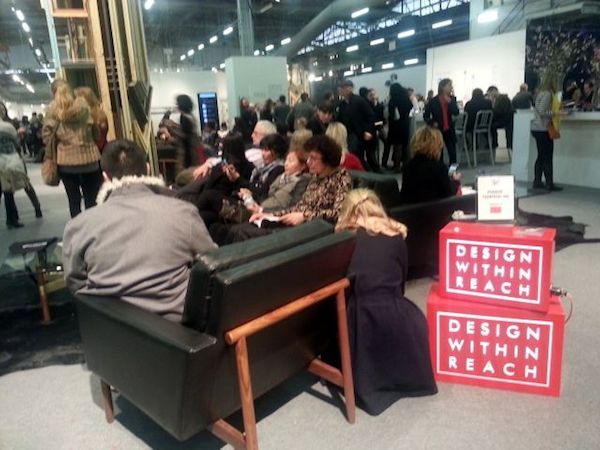
That acknowledgement made, it was a little too easy while walking through the space to get distracted by the works that confirmed my expectations. Yutaka Sone’s Little Manhattan, presented by David Zwirner is amazingly well-crafted. It’s possible to read it as a sly critique of the Manhattan real estate market and the complex alchemy that transforms a particular plot of land into a generator of wealth. And maybe it is, but it’s also hard not to see it as a rich man’s Panorama.
Yes, it’s the island of Manhattan carved out of marble.

And then, of course, there’s the meta-response to the fair itself. Predictable, but it brought a momentary smile to my face. Touché, Postmasters Gallery.
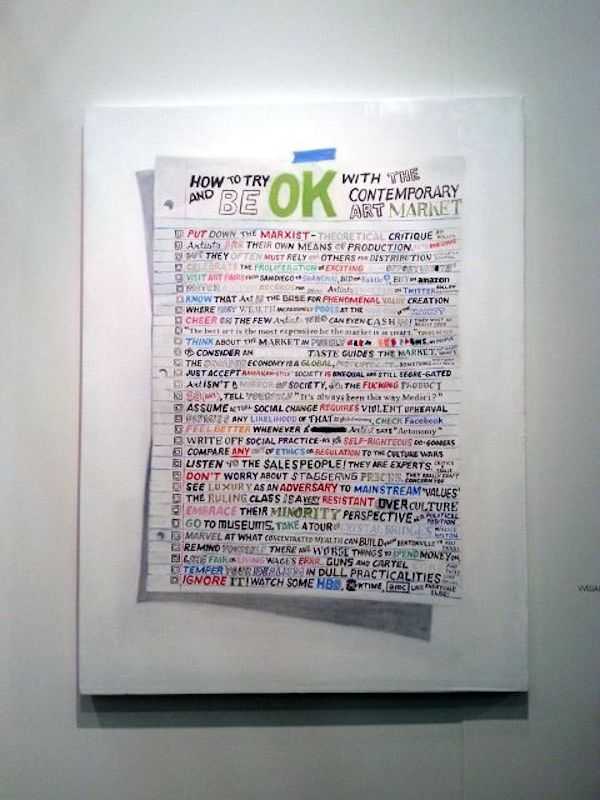
There were a handful of galleries and artists that attempted to work with or disrupt the space:
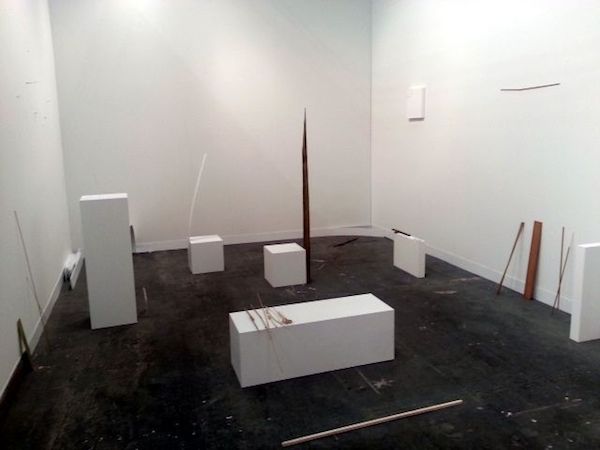
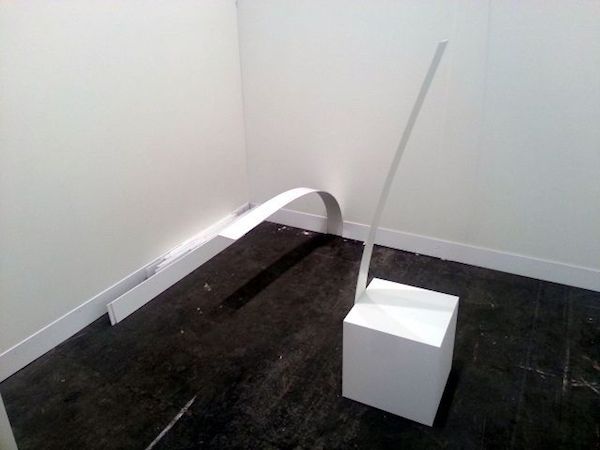
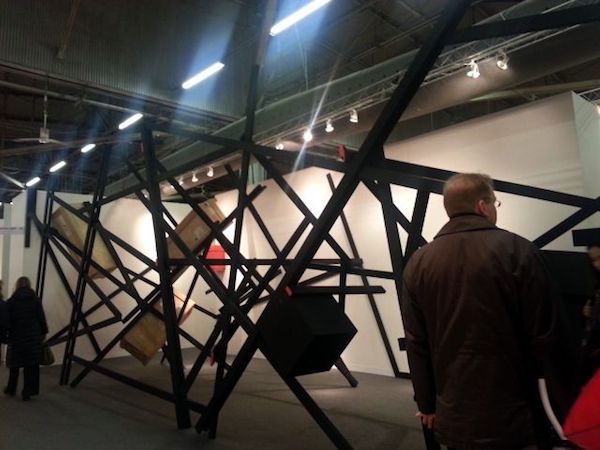
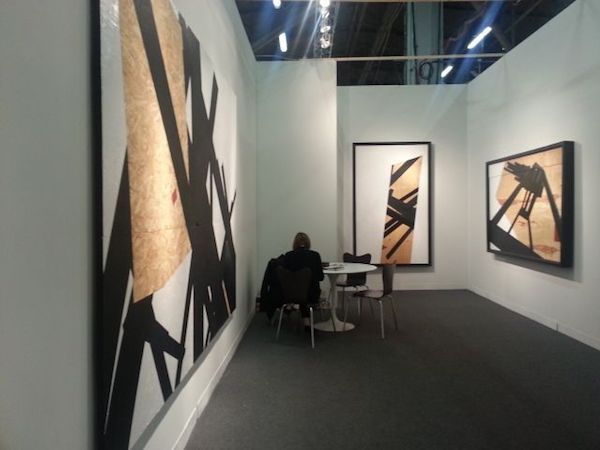
I’m also beginning to suspect that the rise of the selfie has increased the popularity of works with shiny surfaces, the better for photographing yourself in.
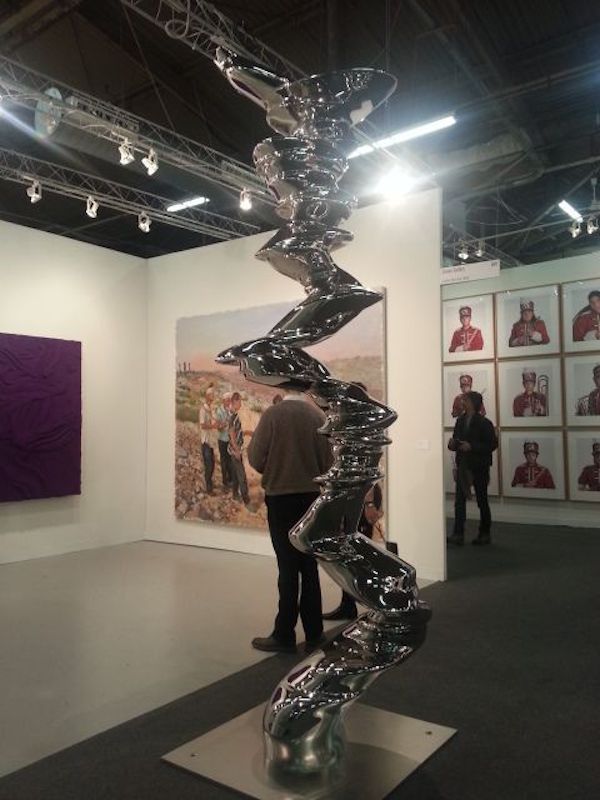
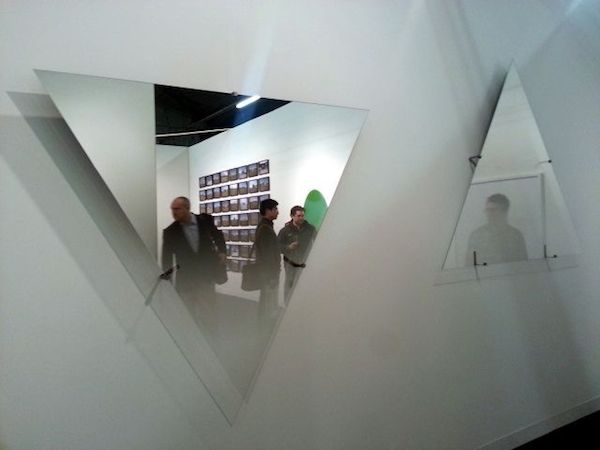

Lastly, there were a (small) handful of works that referenced international protest movements. There’s a tension that’s inherent to any work that transforms real political struggles into objects that are, on some level, luxury goods. That contradiction is heightened in the fair environment.

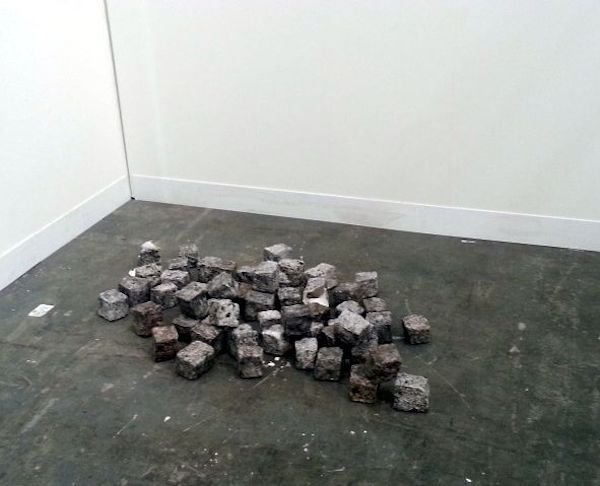
The objects, which look like stones, are actually porcelain and extremely delicate. They were created by the artists during a residency in Ramallah and were inspired by the use of stones as impromptu weapons in street demonstrations.
………..
After diving straight in with Armory, I headed to Volta. Billing itself as an “invitational solo project fair,” Volta is affiliated with Armory but focuses on galleries that work with emerging artists (emerging being, as always, a relative term). As an art viewer, the solo format was a relief after the visual chaos of Armory. The fair still felt dominated by traditional media, with a very strong presence of painting on the first floor, but the presentation of multiple pieces by a single artist in nearly every presentation allowed for a deeper appreciation of the work.
In addition to a heavy painting presence, there was also a significant amount of collage-based or inspired work.
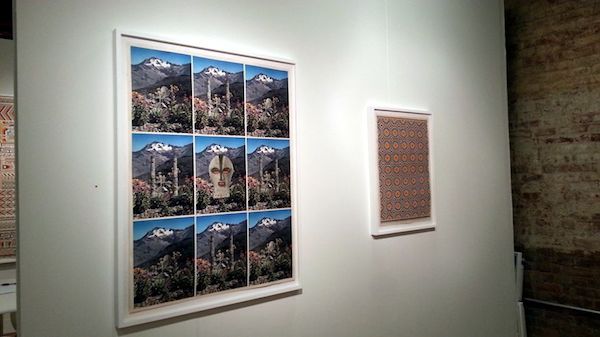


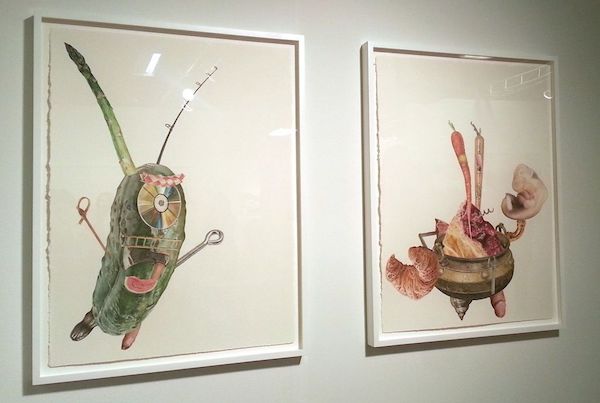
In the midst of 2D work, what drew my eye was often sculpture:
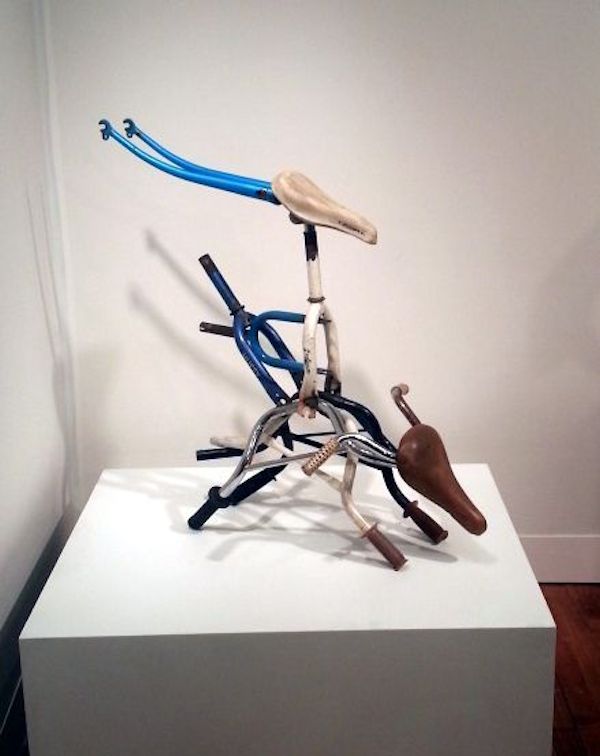
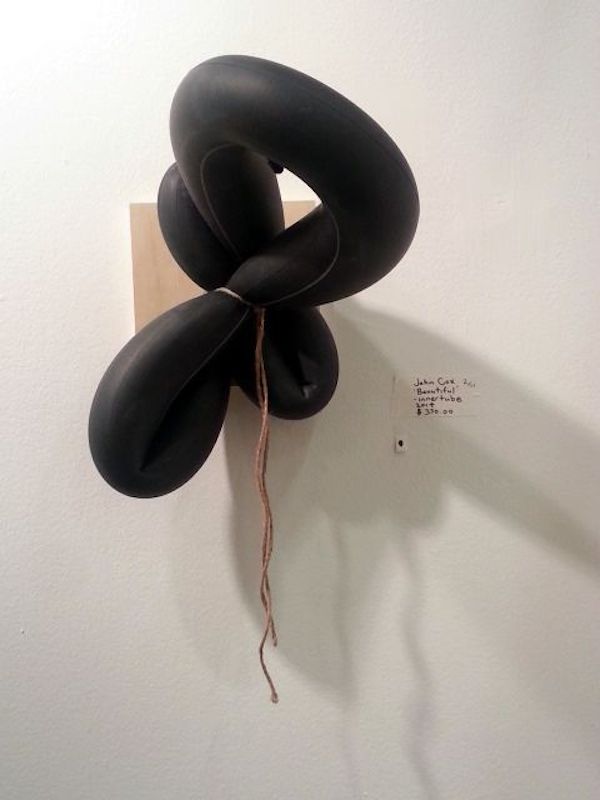
Additional evidence for my theory about shiny art being created to encourage selfies:
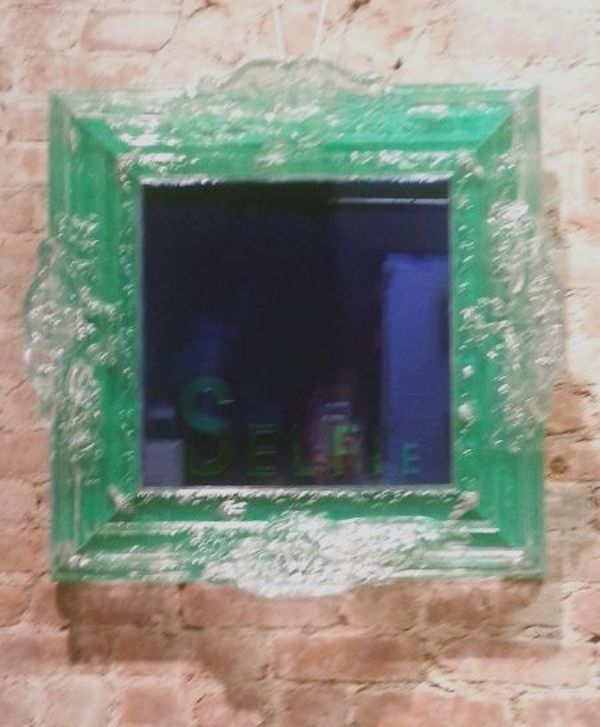
Another potential art fair cliché (things plated in gold), but with a twist – Jin Joo Chae’s Gold Choco Pie is a gold plated sculpture of a popular South Korean snack cake. The mass-produced treat has infiltrated the North Korean black market by way of workers at the Kaesong Industrial Complex that sits in the demilitarized zone between North and South Korea.
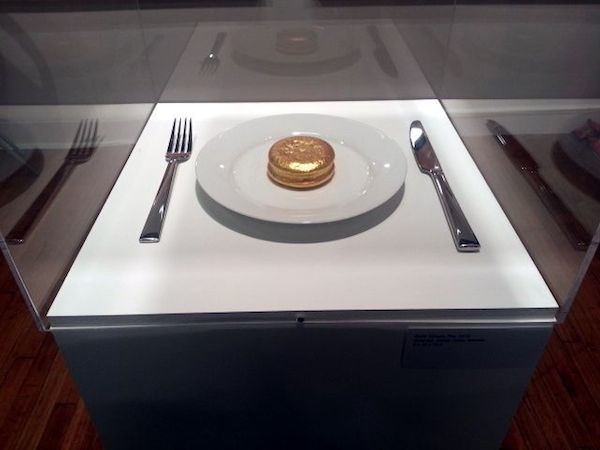
Volta also hosted two performances and several talks. I appreciated being able to see Wilmer Wilson IV’s performance From My Paper Bag Colored Heart on Saturday. I saw a portion of this performance in September of 2013 at Connersmith Gallery in DC. Seeing the piece again in the context of the fair, the work’s exploration of race, voyeurism, and objecthood actually felt more potent.
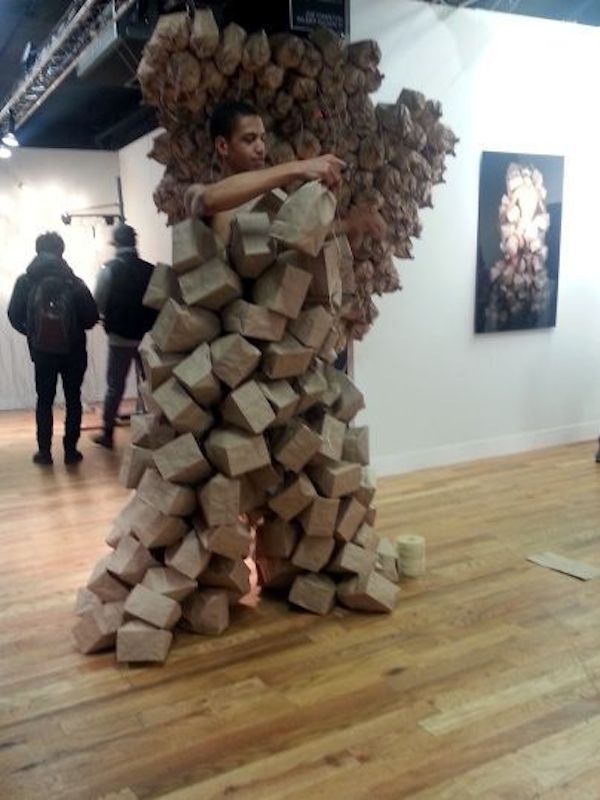
…………………
Moving Image was the most cleanly and thoughtfully presented of the four fairs I attended, probably the result of its single media approach and the organizer’s appreciation of the viewer exhaustion that could easily result from a fair consisting solely of moving-image work. Close to the entrance, there were several smaller installation pieces and a couple of works projected onto large screens. Continuing into the space, most of the work in the fair was shown on uniformly-sized flat screens, suspended from a track on the ceiling so they hung perpendicular to the wall. This positioning meant there was minimal visual interaction with the works, a brilliant arrangement that kept the space from feeling overwhelming.

In addition to the well-considered presentation, Moving Image also included far more explanatory text than the other fairs, including signage with artist bios, information about galleries, and statements about the works themselves. The inclusion of the text was another reflection of the special challenges inherent in presenting time-based work, but it also had the effect of further differentiating Moving Image from the traditional fair environment.
The videos on view represented a pretty standard range of moving image work being made right now. There were a handful of digitally-created pieces, others focused on human interaction and relationships, and several works meditating on nature and landscape.
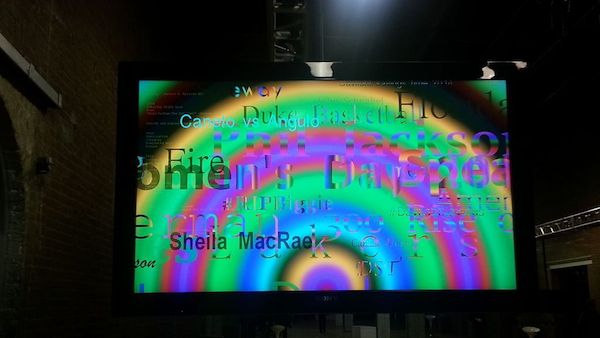
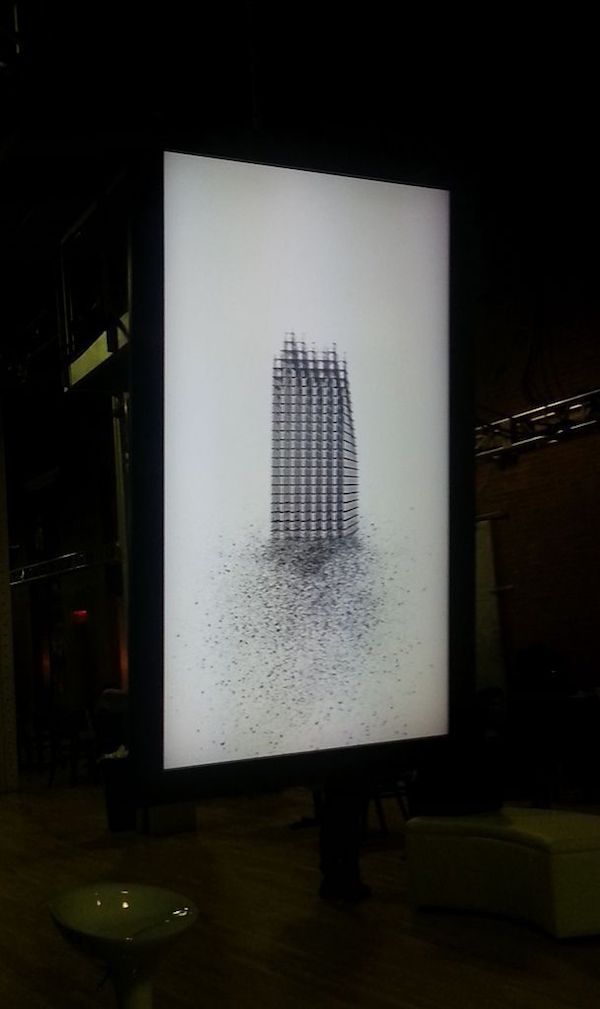


Invocation for a Wandering Lake, part 1 was one of the most moving and meditative pieces I saw all weekend. The video depicts artist Patty Chang as she washes the corpse of a dead sperm whale. At first glance, the artist seems to be washing a solid rock but as the camera pans out parts of the body that are moving in the water become visible.
………………….
If Volta and Moving Image bend the normal art fair format, Spring Break disregards it entirely. The fair invites young and emerging curators to organize selections of young artists along a specific theme. Some of the curators have art consultancies but many of them are primarily artists. The result was uneven, but also refreshingly unpredictable, with a far greater percentage of installation.
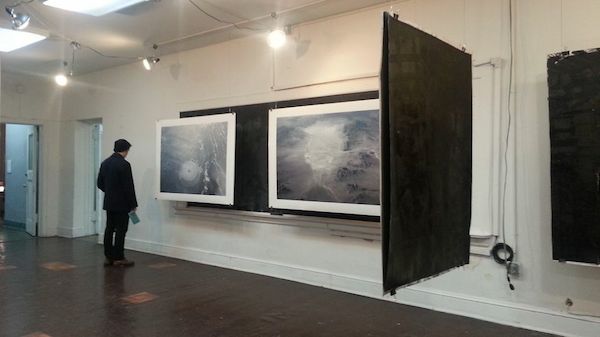
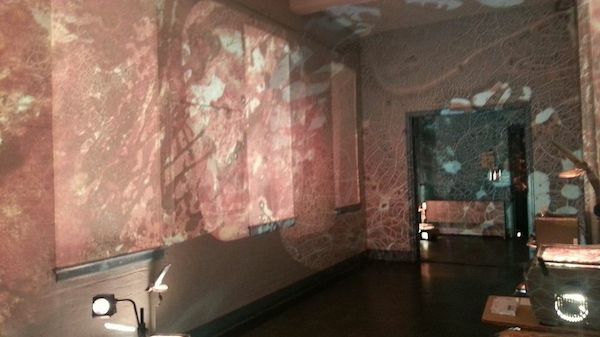


Spring Break had its meta-art world work as well, in the form of Grace Villami’s installation Midi-Midinette (Wernicke’s Tune)

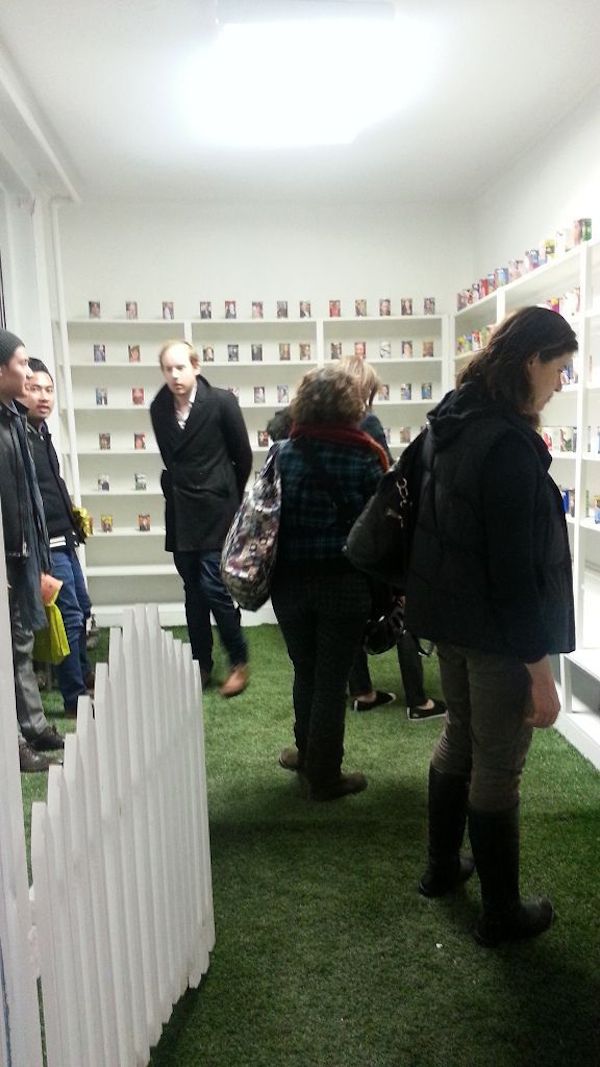
Despite my best efforts, there was a lot I missed over the weekend. In addition to the aforementioned UnFair, I didn’t make it to Independent, Scope, or ADAA. Luckily, there’s always next year. Or the second weekend of May, when Frieze and Pulse anchor another weekend of fairs that also includes SELECT, PooL, the Contemporary Art Fair, and the Outsider Art Fair.
* Author Blair Murphy is a writer, curator, and arts administrator who recently relocated to New York City from Washington, DC. During 8 years in DC, she worked for a number of local arts organizations, including Washington Project for the Arts, DC Arts Center, and Provisions Library. Read more at blairhasablog.blairmurphy.com and follow her @blair_e_murphy.


